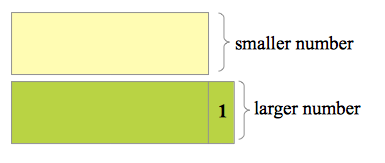Solving Math Word Problems in Numbers Using Algebra
This is the third part of the Solving Math Word Problem Solving Series on Numbers for Grade 6 – 8 students. The first part was on solving number problems mentally by working backward. The second part discussed on solving number problems using the model method. In this post, we are going to discuss how to solve word problems using Algebra if the mental and model methods fail. We will start with simple problems and will continue to solve more complicated problems later. We will use the problems we discussed in the first two parts of this series. Note that the discussion in this post is quite detailed because it is designed for beginners particularly middle school and high school students.
Example 1 One number is 1 more than the other. Their sum is 47. What are the numbers?
Solution
First Sentence: One number is 1 more than the other.
If there are two numbers and the other one is 1 bigger than the number, then if the smaller number is 5, the other is 5 + 1 or 6. So, since we don’t know what the number is, we let the number n. This means that the larger number is n + 1. » Read more
